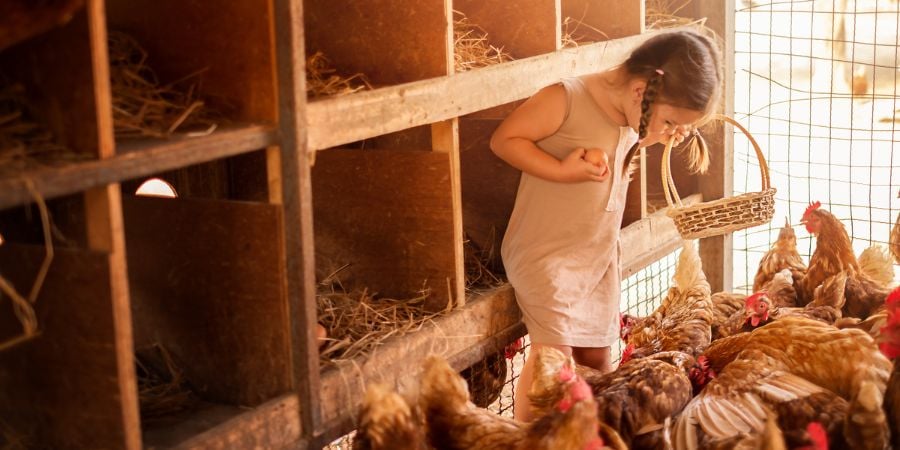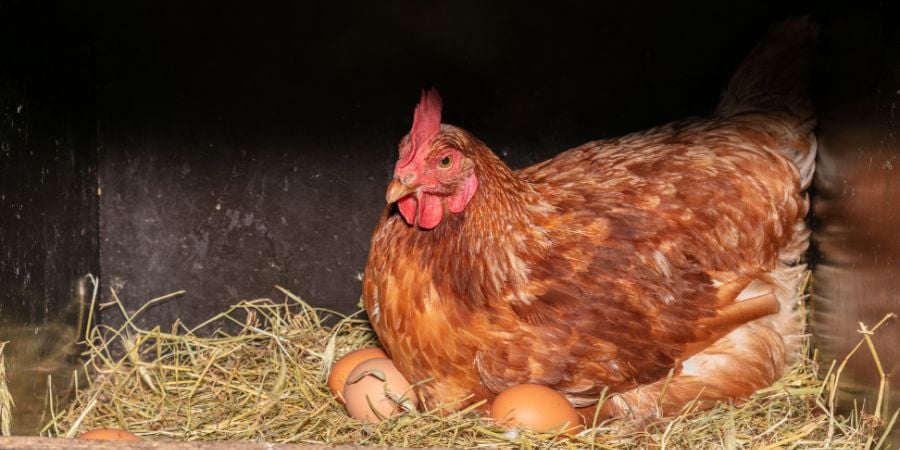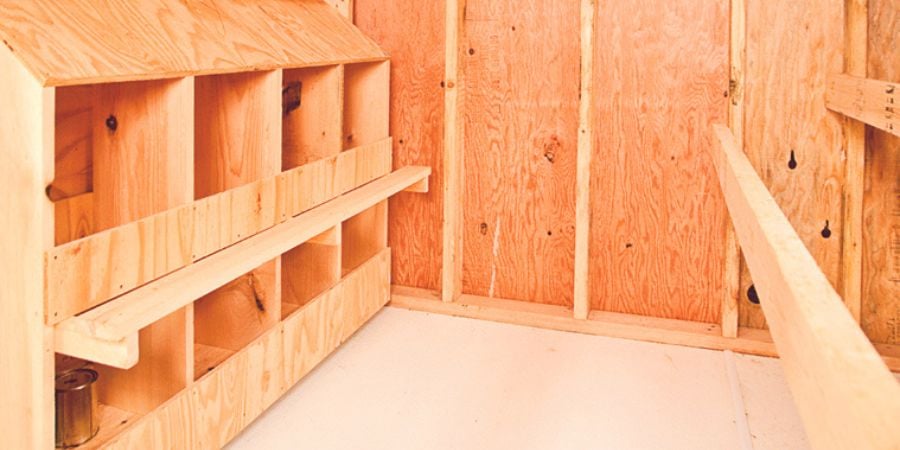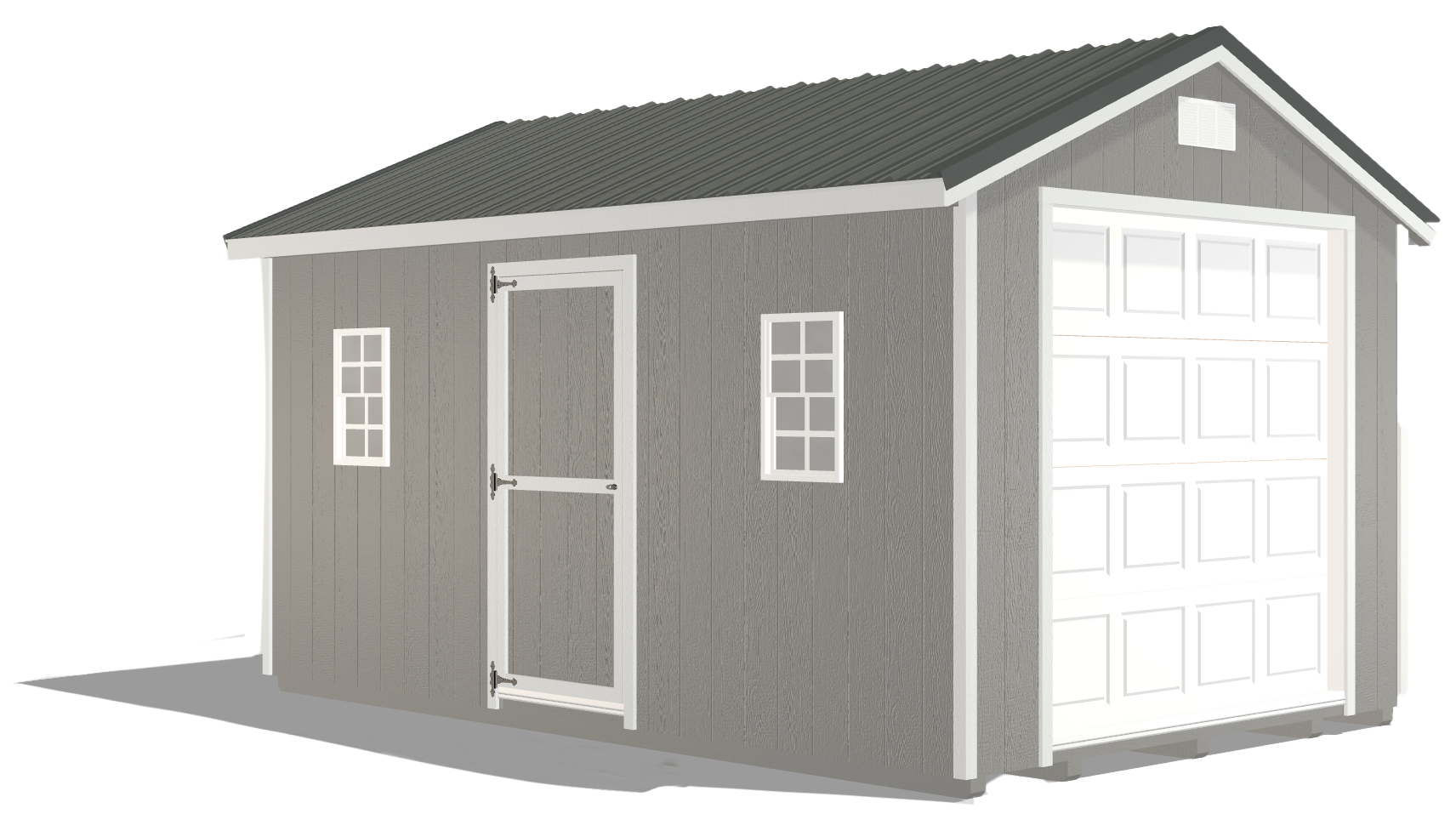The Backyard Chickens for Beginners Guide to Comfortable Nesting Boxes
by Dakota Storage Buildings, on March 06, 2024

Keeping laying hens involves more than the basics of food and water; you must provide a nurturing environment that caters to their natural behaviors and needs. A crucial element in this environment is suitable nesting boxes. These structures offer a comfortable and private place where backyard chickens can safely lay their eggs. The importance of nesting boxes extends beyond the physical aspect; it impacts the psychological well-being of the chickens, influencing their laying patterns and overall health.
When it comes to selecting the right nesting boxes, chicken keepers are often confronted with a wide array of choices, each with its own set of advantages and drawbacks. From traditional wooden boxes to modern, easy-to-clean materials, the variety can be overwhelming, especially for backyard chickens for beginners. There is an abundance of advice and suggestions on the ideal size, location, and number of nesting boxes required for a flock. These options and opinions can make it challenging for both new and experienced chicken keepers to make informed decisions. We want to provide clear, concise, and practical information to help you to navigate through the multitude of choices. Ultimately, this blog should empower you to make the best decisions for your flock, ensuring that your hens have a comfortable, secure place to lay their eggs.
Understanding the Importance of Nest Boxes

Nest boxes play an indispensable role in the world of backyard chickens. They are not just structures; they are vital for ensuring a clean, secure environment conducive to egg-laying. A well-designed nest box not only provides a safe haven for hens to lay their eggs but also significantly reduces the likelihood of egg breakage and contamination. It helps maintain hygiene, comfort, and the health of your backyard chickens.
Observing and understanding your flock's comfort level in these nest boxes is key to optimizing their living conditions. Chickens, like any other animals, exhibit clear preferences and behaviors that indicate their comfort or distress. Paying close attention to these behaviors can reveal a lot about their needs. For instance, a hen that consistently lays in a particular box or avoids a certain area can provide insights into what works and what does not in your current setup.
The connection between a chicken’s well-being and the quality of its eggs is undeniable. Hens that are comfortable, stress-free, and healthy tend to lay eggs more consistently and of higher quality. Factors such as the softness of the bedding, the privacy of the nest, and the ease of access to the nest boxes all play a crucial role in this. A hen that is stressed or uncomfortable is less likely to lay regularly and may produce eggs with weaker shells or poor yolk quality.
The Ideal Number of Nesting Boxes for Your Backyard Chickens
When choosing the appropriate number of nesting boxes for your flock, a general guideline suggests providing one nesting box for every 4-5 hens. For smaller flocks, the necessity of having at least two nesting boxes cannot be overstated. This is not just to accommodate the physical need for laying space, but also to address the social dynamics of the flock. Chickens have their own social hierarchy and behavioral patterns, and territorial disputes over nesting spots can arise, even in smaller groups. Providing multiple nesting options helps mitigate these conflicts, ensuring that each hen has access to a comfortable laying area without feeling threatened or stressed.
The diversity in your flock's age and laying patterns can also influence the number of nesting boxes needed. Younger hens and those who are new layers might prefer more secluded or individual spaces as they establish their laying habits. On the other hand, older or more experienced hens might be more flexible with their nesting choices. Observing these patterns can help you tailor the nesting arrangements to suit the specific preferences and tendencies of your hens.
The layout and size of your coop also play a significant role in determining the optimal number of nesting boxes. In larger coops, spreading out the nesting boxes can prevent overcrowding in one area and encourage more uniform usage of all available spaces. However, in smaller coops, space constraints might limit the number of boxes you can install, making it even more crucial to design and position them in a way that maximizes accessibility and comfort for each hen.
While the recommended ratio of one nesting box per 4-5 hens is a useful guideline, it is important to consider the unique characteristics of your backyard chickens, the physical attributes of your coop, and the social dynamics among your hens. By doing so, you can ensure that you provide enough nesting boxes to meet the needs of your hens, promoting a peaceful and productive laying environment.
Choosing the Best Material for Your Chicken Nesting Boxes

The materials for your nesting boxes are a crucial aspect that significantly impacts the comfort, hygiene, and overall health of your hens. Wooden boxes have been a traditional choice for nesting boxes, and for good reason. Wood is a naturally insulating material that helps in maintaining a stable temperature within the nesting box. This is particularly important in areas with extreme weather conditions, as it ensures that the nesting box remains neither too hot in summer or too cold in winter. The natural texture and appearance of wood blend seamlessly with the outdoor environment, providing a sense of comfort and security to the hens.
However, the choice of materials extends beyond wood. Options like plastic, metal, or even repurposed materials offer benefits and challenges. Plastic nesting boxes, for example, are easy to clean and disinfect, making them a good option for maintaining hygiene. They also resist parasites, which can be a significant issue in wooden boxes. Metal boxes, on the other hand, are durable and predator-proof, though they may require additional insulation to regulate temperature. The key is to consider factors such as durability, ease of cleaning, parasite control, and insulation properties when selecting materials for your nesting boxes. Each material has its own pros and cons, and what works best depends on your specific circumstances — including your local climate, the size and composition of your flock, and your management practices.
In addition to the material itself, the design of the nesting box also plays a role in your hens' well-being. Features like the size of the box, the height of the entrance, and the type of bedding used are all influenced by the choice of material. For instance, softer materials like wood can be more comfortably shaped to suit ergonomic designs that cater to the natural nesting instincts of the hens. Your backyard chicken coop should find the right balance between functionality, comfort, and health to ensure that your hens are laying in a safe, hygienic, and comfortable environment. A happy hen is a productive hen, and the right nesting box materials and design can significantly contribute to their overall well-being and productivity.
Key Features for Chicken Comfort and Egg Collection

When designing the perfect nesting box for your chickens, several key features must be considered to ensure the comfort and safety of your hens, as well as the convenience of egg collection and maintenance.
Strategic Location
Chickens naturally seek out tranquil and secluded areas for egg-laying, as it provides them a sense of security and privacy. When positioning nesting boxes, it is crucial to place them in quieter corners of the coop, away from the hustle and bustle of feeding areas and regular human activity. This location mimics their instinct to find hidden, serene spots for nesting. The placement should protect the hens from environmental elements like direct sunlight, strong winds, or heavy rain, which can cause discomfort or stress.
Easy Accessibility
The entry to the nesting box should be designed so that your backyard chickens have easy access. The entrance needs to be wide enough to allow hens to enter and exit without difficulty, but not so large that it exposes them to potential predators or excessive light, which can be disruptive. The ideal entryway should also have a small lip or edge to contain the bedding material while still allowing the hen to step in comfortably.
Sloped Lids
Hens have a tendency to roost on flat surfaces, and if they roost on the tops of nesting boxes, they can dirty the area with droppings, leading to unhygienic conditions. Incorporating sloped lids on the nesting boxes discourages this behavior. The slope should be steep enough to prevent them from comfortably perching atop the boxes and maintaining the cleanliness and hygiene of the nesting area.
Removable or Hinged Lids
For the chicken keeper's convenience, nesting boxes should be designed for easy access to the eggs. Removable or hinged lids are ideal as they allow quick and easy egg collection without disturbing the hens too much. Additionally, these features facilitate simpler cleaning and maintenance of the boxes, ensuring a hygienic environment for the hens to lay their eggs.
Ventilation
Proper ventilation within the nesting box is vital for maintaining a healthy environment. Good airflow helps to prevent the buildup of moisture and condensation, which can lead to mold and bacteria growth. It also ensures that the nesting area remains dry and comfortable for the hens. However, care should be taken that the ventilation does not create drafts, as this can cause discomfort to the hens.
Discover the Secrets to Healthier Hens and Better Eggs
Investing time, effort, and resources into the living conditions of your hens has numerous benefits, the most tangible of which are the fresh, high-quality eggs they produce. When hens are comfortable, stress-free, and healthy, their egg-laying productivity increases significantly. This is not just a matter of quantity but also quality; happy hens lay eggs with stronger shells and more vibrant yolks, a clear indicator of their overall health.
To gain a deeper understanding and more practical knowledge on raising backyard chickens for beginners, we highly encourage readers to download our free resource, “The Beginner’s Guide to Getting Backyard Chickens.” This guide is packed with detailed information, tips, and best practices covering every aspect of chicken care, from choosing the right breed to addressing common health issues. Whether you are a beginner or an experienced chicken keeper, this guide will serve as an invaluable resource in your journey to creating the ideal living space for your hens, ensuring their health, happiness, and productivity.

























